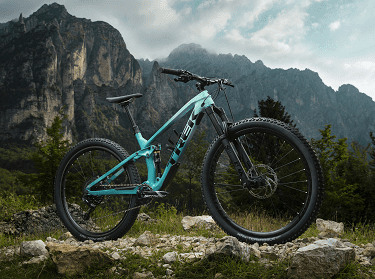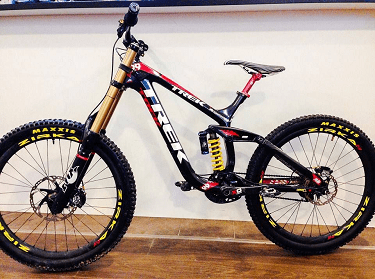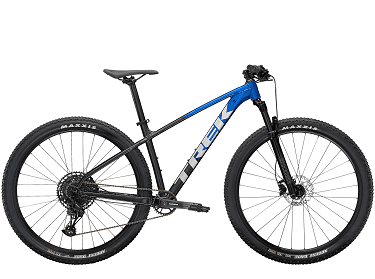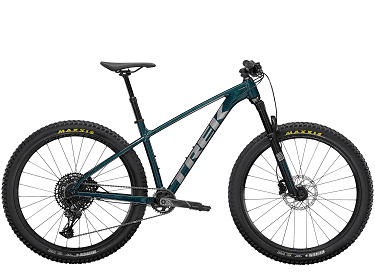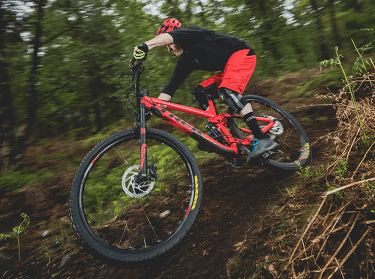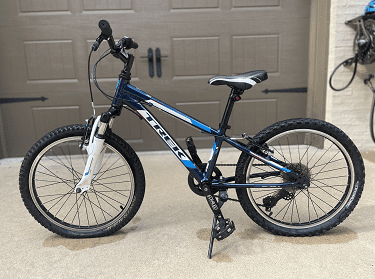Hi there! If you are reading this piece right now, chances are that you’re looking to get a plus-sized bike for cross-country rides. And guess what? You are right on track! The fast-rolling Trek Stache bike lets you enjoy long distance rides with minimal efforts. Get familiar with some amazing performances of the Trek Stache and don’t forget to share with your mountain bike friends.
- Part 1: How Easy Is It To Climb Hills With The Trek Stache
- Part 2: Downhill Performance
- Part 3: What about the Trek Stache Frame Design
Part 1: How Easy Is It To Climb Hills With The Trek Stache
Mountain climbing has never been easier like it is with the Trek Stache. Considering the components that make up this bike, it is more glaring why it is valuable to mountain riders. For one, the carbon frame makes for light weight. So, it is immaterial that the rider is plus-size. The light frame makes up for the rider’s weight. And you shouldn’t be amazed when you head to the mountains and see the Trek Stache fly up the hills with ease. This is made possible with combination of the lightweight frame, giant wheels and the GX Eagle drivetrain.
However, riders can experience initial difficulty in steeper climbs. The rough terrain is bound to reduce grip of the XR2 tires on the ground, but the Stache bike will set you in a vantage position to overcome the obstacles. At this point, you must understand that sitting down to pedal is an unwise decision. You’ve got to stand on the pedals, muscle some strength and power up the hills.
There’s one crucial feature that stands Stache bike out of the pack and that is the rollover ability. Expectedly, having fat tires with 29 x 3.0-inch dimensions is bound to slow down a rider’s speed at first. And for the Trek Stache, the beginning is usually the hardest. However, after pedaling for some moments, there’s hardly any obstacle riders cannot crush. Is it rocks or roots? They will all give way to the incredible force coming with the Trek Stache.
The journey is not always smooth when it comes to mountain biking. Sometimes, riders veer off the route to wrong or undesirable paths. And it becomes crucial to get back on track. If you find yourself in this situation, panicking will only make it worse. You can rely on the short wheelbase that comes together with the head tube angled in a steep manner. This component makes it possible to steer the bike and yourself to safety.

Part 2: Downhill Performance
Descending the hills can be fun and brutal at the same time with the Stache bike. And it would probably suffice if we said downhill performance with Trek Stache is a double-edge sword. It is possible that you are blown away by the frenzy of riding down the mountains at full speed. Likewise, the experience can be rough and dangerous to the riders. So, why is this the case? Well, if you’ll recall, we said that the Stache has a 29×3.0 inches wheel. These tires are too wide or fat to slow down when coming down the hills.
Riders must also keep extra caution. If you notice that the mountain surface is rough and gravely, you should consistently apply the brakes until you get to bottom of the hill. With Trek Stache, it takes about 50 feet to bring to a convenient stop. Therefore, endeavor to practice with the brakes before joining your friends in the mountains.
Nevertheless, the Trek Stache has a reliable braking system. The bike comes with the incredible SRAM Guide R brakes which make it easier to break or totally shut down speed. Moreover, there’s no need to second-guess getting a Trek Stache because of the downhill performance. Since the fat tires require pedaling efforts, you would definitely be discouraged from pushing leaning too much on them.
Before we proceed to the next feature, tire pressure goes a long way in controlling the movement of the Stache bike when riding downhill. You cannot afford to have Trek Stache tires with too much air. Neither should you deflate your tires so much that it affects maneuvering abilities.
Always bear in mind that your tires should find a balance between 15-16 PSI.
No doubt, the Trek Stache has a nice build. In front of the bike lies the 120mm RockShox Pike, creating a strong and reliable front end. With the RockShox Pike, you can maneuver rocky paths. But that would only be for a short while.
Part 3: What about the Trek Stache Frame Design
Most Trek mountain bikes come with carbon fiber frame and the Trek Stache is not an exception. Under close observation, you’ll discover that the Trek Stache’s chainstays are about 423mm with a wheelbase me of 1120mm. Also, the top tube has a measurement of 614mm with a reach of 421mm. To consider the angles, the Trek Stache has a head tube angle of 68 degress in addition to seat tube angle of 73.7-degrees.
Here’s the most interesting part of the Trek Stache frame design. The bike is indeed distinct. In addition to being a 29er, the Stache bike has an additional 3 inches tires and boost spacing. To provide riders with more options, Trek Stache bikes usually come as single-speed and geared bikes. Likewise, you could go for the aluminum or carbon frame model. The choice is yours to make.
Final Verdict
The Trek Stache is an elite bike with five-star performance for professionals who have mastered the art of mountain riding. Although it takes a while to get to full speed, it’s easier for Trek Stache riders to sustain momentum due to the massive tires that can withstand the greatest shocks and sharp objects along the trails.
But hey! Here’s a big advice. If you‘re looking to get the Stache, it should be as a second bike. This bike requires practice, skills, and over $3,000 to acquire. So, you should weigh your options before taking that giant leap.

